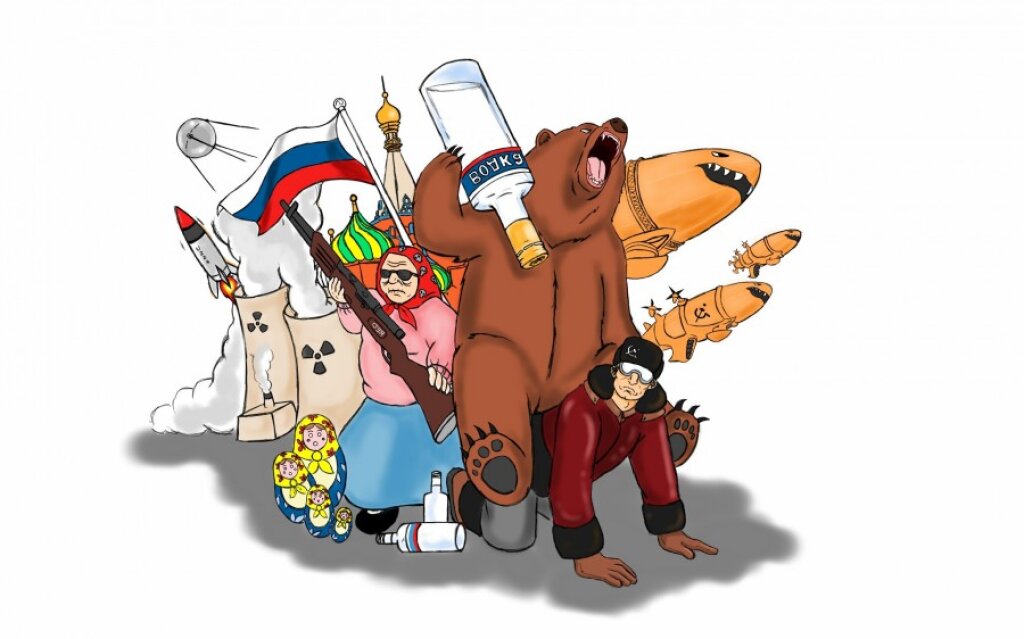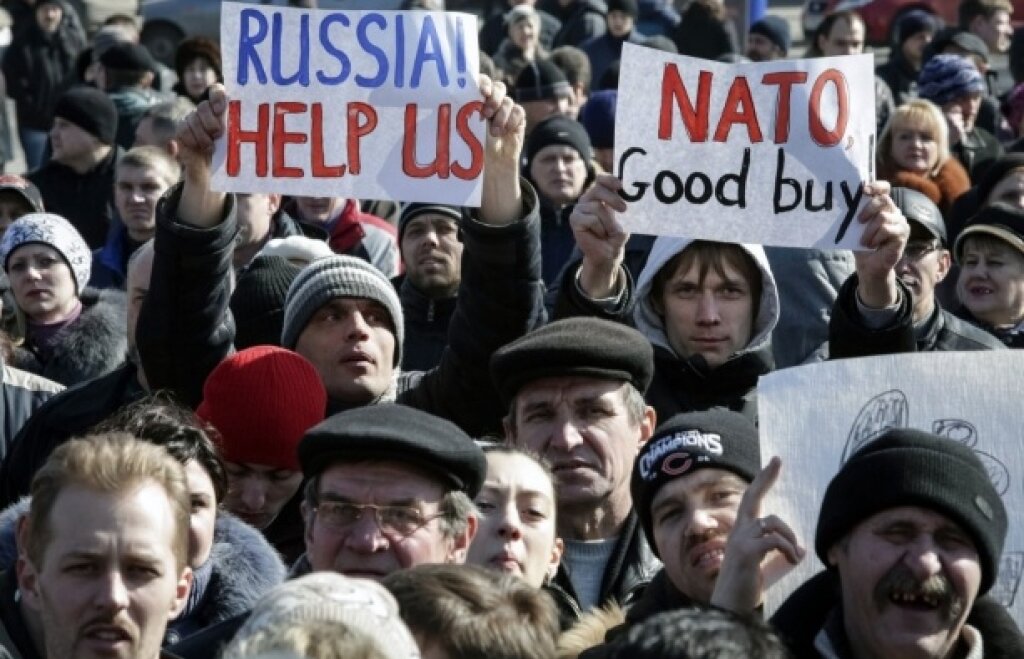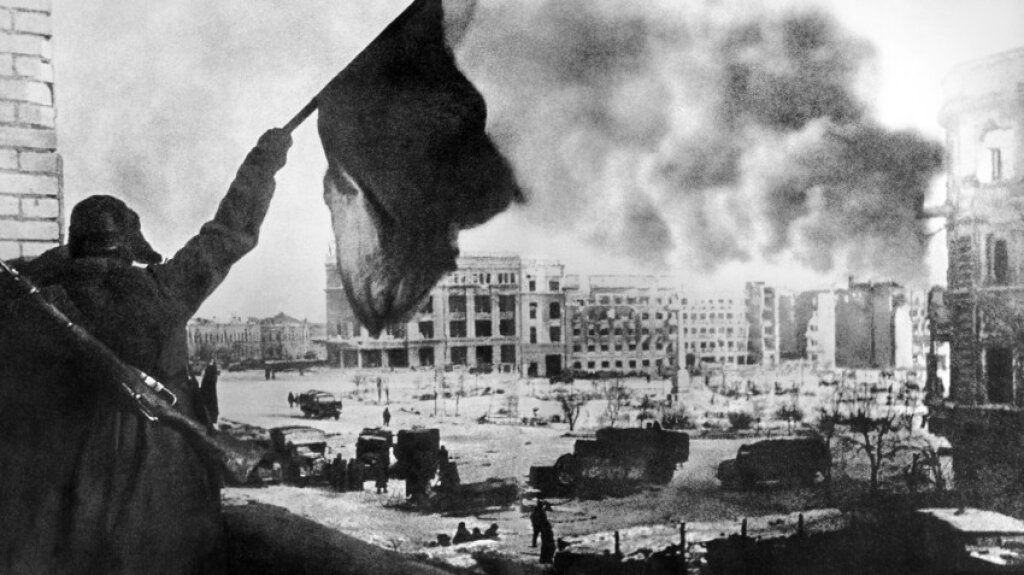This is the second entry of
Russia’s Alien Nations: The Secret Identities of Post-Socialism
, an ongoing feature on All the Russias. It can also be found at
. You can also find the previous entry
.
On the most superficial level, the tag line “He’s Russian. That explains a lot” is supposed to elucidate the main conflict in the two scenes that, framing the movie proper, take place twenty years after the main story. The young recruit is Andrei Tolstoi’s son, and his Russianness is meant to justify his almost idolatrous dedication to a portrait of Mozart. He would rather suffer unending punishment at the drill sergeant’s hands rather than simply repeat the phrase demanded of him: “I don’t give a shit about Mozart.” Mozart, of course, is even less Russian than his half-American admirer, but, in addition to showing a presumably Russian steadfast devotion to high ideals, this episode also prefigures the strategy that would be later adopted by Alexander Sokurov in his 2002 Russian Ark, which suggests that the European heritage collected in the Hermitage is housed and saved specifically by Russia. Yet despite the Eurocentric cast it gives to Russian culture,
The Barber of Siberia
stands out as a remarkable work of self-Orientalization. The over reliance on Russian stereotypes and national culture in the Maslenitsa scene has all the subtlety of Disneyland’s “It’s a Small World” ride, with animatronic Russians dancing in their colorful national garb. The Russian audience’s pleasure is that of both direct recognition (“this is us!”) and mediated or alienated pleasure (“this is us, showing those Westerners who we truly are”), even if the West greeted the film with resounding indifference. This self-Orientalization on screen is performative by definition, but it is a performance that is hardly naturalistic. Mikhalkov is no David Mamet, inventing hyperrealistic dialogue to show the very specific, and very problematic, underside of his country’s culture.
The Barber of Siberia
performs identity in such broad, exaggerated strokes that one hardly needs the writings of a Judith Butler to identify what makes it performative as opposed to “natural.” Indeed, the characters of
The Barber of Siberia
are so mannered, so artificial that they resemble nothing more than…a drag show. Consider: Oleg Menshikov is a talented and popular actor, so it is no surprise that MIkhalkov would want him in his film. But casting him as a member of the cadet core strained credibility: when
Barber
was released, Menshikov was already 38, and spent most of the first half of the film forcing his face into a wide-eyed impression of naivete as a way to look younger. His mother is played by another acclaimed actress, Marina Neyolova, who at the time was only 51. The role of the American femme fatale is filled by the British Julia Ormond (who, to be fair, manages a convincing American accent). And, of course, all of the English dialogue is overdubbed in Russian by Mikhalkov himself when he’s not too busy playing the film’s literal and figurative tsar. If Mikhalkov were of a less conservative bent, one might be inclined to think of
The Barber of Siberia
as an exercise in non-traditional casting, akin to having Bob Dylan played by six different actors of various genders and races in Todd Haynes’ 2007
I’m Not There
. Instead, Mikhalkov’s aesthetic of excess points us back to an unconscious replication of drag. The performances are all over-the-top, with the main actors saddled with roles they can only embody through campy exaggeration, and Mikhalkov turning all of them into Russian cinematic Lypsinkas. It may have been the most expensive drag show in history. Mikhalkov himself has stated repeatedly that the film cost more
e, with a quarter of the funds coming from Russian state coffers. One source places
Barber of Siberia
as number 76 on a list of the
top 100 money-losing films in the Russian Federation
(apparently, it only grossed $1.6 million). On a financial level,
Barber
was a spectacularly bad investment, but the lost money must not obscure the fascinating role the film plays in the drama of post-Soviet Russian mass culture’s renegotiation of Russian identity. On the one hand, the film was clearly an occasion for the country’s elites to celebrate themselves (Mikhalkov’s lack of artistic subtlety was only outdone by the
pomp occasioned by the premiere
: fireworks, the ringing of the Kremlin’s fabled chimes, and a four-course “tsarist” banquet. On the other hand, its failure in the international arena recapitulated the film’s performance of Russian soulfulness in the face of a combination of capitalist cynicism and the West’s inability to understand Russia’s “authentic self.” Mikhalkov had insisted that
Barber
would
restore Russia’s national pride while reviving the domestic film industry
; the man who cast himself as Russia’s second-to-last tsar saw little distinction between his ambitions for himself (international critical acclaim) and for his country (a return to glory). No amount of “Cadet” eau-de-cologne could hide the stench of this flop at Cannes or the Oscar, but it was still granted a special (consolation?) prize by the Russian state in 2000. From a distance of two decades,
The Barber of Siberia
appears to have succeeded at only one thing: being the perfect symptom. MIkhalkov’s film, in no small part thanks to its aesthetic of unrelenting excess, is a snapshot of the post-Soviet, pre-millennial national preoccupation with national identity. Such a preoccupation should not be surprising, given the circumstances: as an independent state, the Russian Federation was only 7 years old, and the trauma of the Soviet collapse has not been resolved to this day. What
Barber
shows, however, is how much this concern with identity depends on the imagined gaze of the Other. If the debate on national identity happens, and no one outside the national borders pays attention, does it really matter? The tag line, “He’s Russian. That explains a lot” is a substitute for an explanation, or perhaps a pointer in the explanation’s direction. Its placement towards the end of the film suggests that the explanation has already been provided by the film itself. Its deployment is humorous, since there is little chance that the drill sergeant actually has any idea about Russia beyond a few stereotypes. On the other hand, it is precisely stereotypes that the film so gleefully provides. And as an advertising slogan in Russia, and in Russian, it was a peculiar choice, since the majority of people reading it would be Russians, and therefore should be unlikely to see a fellow Russian’s Russianness as a persuasive explanation for anything they might otherwise find confusing. Only the imagined Other justifies the need for such an explanation, and yet the content of the film (the explanation) was far more satisfying to Russian audiences than to any outside the country’s borders. Earlier I called the film’s stereotypes “self-Orientalization,” a process that only works as part of the audience’s self-alienation: imagining how this looks to outsiders.
Next: Philosophical Moving Pictures



